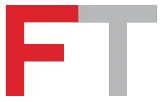Wireless
Any Way You Slice It, Wi-Fi 6E Offers True Tri-Band Wi-Fi
Let’s say I had two pies and cut one of them in half. How many pies do I have now? Of course, I’ve still got […]
FutureOfWork
Squeezing 3 years of work into just 2 months
The enterprise has been on a path to IT modernization for several years now, converting to cloud-based frameworks to make their networks more capable, flexible […]
FutureOfWork
6GHz Wi-Fi: Home Networking for the New Normal
With so many of us working from home to stem the spread of COVID-19, the demands from doing-it-all-in-place are taking a toll on our wireless […]
FutureOfWork
Tomorrow: A New Wi-Fi for the New Normal
The internet is listing. It started about a month ago, when social isolation orders sent everyone home who could work or learn remotely. Which means […]
FutureOfWork
Can Wearables Help Detect Coronavirus?
Wearables have always been about trying to keep us healthy. Increasingly, they’re also being used to help detect when we’re sick. And now, with the […]
Consumer Tech
Working from Home? Here’s How to How to Slash Your Power Bill
There are lots of ways to save money while working from home to help stem the spread of coronavirus, like losing the commute or making […]
Enterprise
You Don’t Need Python – Just Forward Networks
If you wait long enough, as any good procrastinator knows, tasks sometimes drop off your to-do list on their own. Maybe a deadline has passed. […]
Enterprise
Building AI’s Foundation, One Penguin at a Time
Unlikely as it may seem, the same artificial intelligence model that can dramatically reduce the time it takes researchers and environmentalists to monitor penguin populations […]
Enterprise
Turns Out, AI and Privacy Can Coexist
Is there any hope left for retaining any privacy online? Could be, actually. “Don’t panic yet,” says Casimir Wierzynski, Senior Director of AI Products at […]
Consumer Tech
The S20 Does More Than Turn It Up To 11
It’s not just the model number of the new Galaxy S20 family that’s soared. A quick scan of the specs reveal that they’ve skyrocketed as […]
More columns
Intent-Based Networking: Top Enterprise Tech
The coronavirus may have snuffed the flagship Mobile World Congress this year. Show or no show, however, the technology that’s top of mind for enterprise […]
Consumer Tech
PCs to vibrators, CES did not disappoint
The official new year begins at the stroke of midnight New Year’s Day, of course. But for the tech industry, the year invariably kicks off […]
Wireless
It’s Not the Cable Company. It’s Bad Wi-Fi
Your home broadband connection is faster than your cellular connection. Don’t believe it? You’re not alone. Many people think the opposite is true. But it’s […]
Enterprise
Intent-Based Networking Activity Heats Up
It’s starting to look like 2019 will be remembered as the year people stopped asking, “what is intent-based networking?” and started saying “I need intent-based […]
Wireless
Wi-Fi 6 Impact Report: Evolution? Or Revolution?
Just how big is Wi-Fi 6? Will the new generation of wireless connectivity change everything? Or will it just provide what we’ve already gotten with […]
Consumer Tech
A Future Without Privacy
Michal Kosinski says we already live in a post-privacy world. He should know. The Stanford Graduate School of Business professor studies what artificial intelligence can […]
Consumer Tech
Join Me for My Privacy Now Interview Series on YouTube
Once a low-level concern buzzing around in the back of our minds as we shared our lives on social media, the question of just what […]
Consumer Tech
Updates in Sight & Sound: Two New Video Reviews
Two new gadget reviews posted this week on my YouTube channel. In the first, I evaluate PureCam, a full-featured and aggressively-priced new dash cam from […]




















